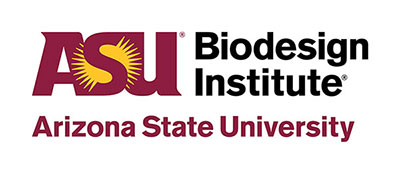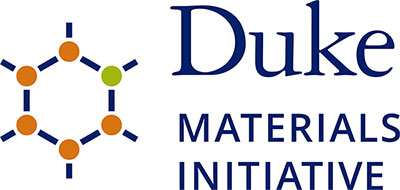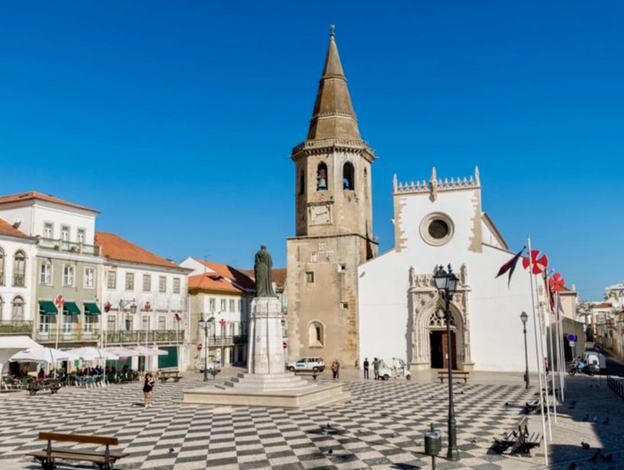
May 12 – 16, 2024
Tomar, Portugal
Your poster should be no larger than
1.5 meter high and 1.0 meter wide (Portrait Style)
About This Conference
The overarching goal of this conference is to bring together a broad and diverse range of scientists, including mentees and trainees, from academia and industry working in the interdisciplinary fields of biology, chemical and bioengineering, materials science, physics, biofabrication and biomanufacturing to converge on technologies related to innovative and
translational nanotechnologies.
The conference will build on the successes of the previous four ECI meetings on Nanotechnology in Medicine to highlight advances in and translation of physical triggers and advanced materials in translational nanomedicine with a focus on the following thrusts:
- Advanced Drug Delivery
- Advanced Imaging
- Immunoengineering
- Surgery and Tissue Repair
- Biofabrication of Tissue Models
- Nano-Bio Interactions
- Translational Nanotechnologies
- Special session on Justice, Equity, Diversity, and Inclusion
Conference Organization
Conference Co-Chairs
Shyni Varghese, Duke University, USA
Professor of Biomedical Engineering and Professor of Mechanical Engineering and Materials Science
Stefaan De Smedt, Ghent University, Belgium
Professor and Pro-Dean of the Faculty of Pharmaceutical Sciences; Director, Ghent Research Group on Nanomedicines; Director, Laboratory of General Biochemistry and Physical Pharmacy
Kaushal Rege, Arizona State University, USA
Chair, Biological Design Graduate Program; Director, Center for Biomaterials Innovation and Translation, Biodesign Institute Chemical Engineering, School for Engineering of Matter, Transport and Energy
Previous Conferences in this Series
Nanotechnology in Medicine: From Molecules to Humans
July 3-7, 2016
Hernstein, Austria
Conference Chairs:
Lola Eniola-Adefeso, Department of Chemical Engineering, University of Michigan, USA
Paolo Decuzzi, Italian Institute of Technology, Italy
Nanotechnology in Medicine II: Bridging Translational in vitro and in vivo Interfaces
June 5-9, 2018
Grande Real Santa Eulalia Hotel, Albufeira, Portugal
Conference Chairs:
Millicent Sullivan, Department of Chemical & Biomolecular Engineering, University of Delaware, USA
Josué Sznitman, Department of Biomedical Engineering, Technion-Israel Institute of Technology, Israel
Nanotechnology in Medicine III: Enabling Next Generation Therapies
May 15 – 20, 2022
Grand Hotel San Michele, Cetraro (Calabria), Italy
Conference Chairs:
Milica Radisic, University of Toronto, Canada
Victor Shahin, University of Münster, Germany
Co-Chairs:
Millicent Sullivan, University of Delaware, USA
Josué Sznitman, Technion, Israel
Lola Eniola-Adefeso, University of Michigan, USA
Call for Abstracts
Note: Only a limited number of oral presentation slots are available and thus all submissions for oral sessions will be considered for both oral and poster presentation.
Session topics are available above. Please use these titles to pre-select up to two sessions where you believe your work fits best.
Abstracts (one page maximum) that include specific results and conclusions to allow a scientific assessment of the proposed oral presentation are invited. Please prepare your abstract according to this template: docx or doc.
Abstracts must be submitted electronically using the template provided at: THIS LINK.
Oral abstract submission deadline: April 15, 2024
Poster abstract submission deadline: May 10, 2024
Poster size: Your poster should be no larger than 1.5-meter-high and 1.0-meter-wide (Portrait Style)
Abstracts of all presentations will be made available to conference participants prior to the start of the conference.
Sponsors
Conference Fees and Registration
Conference Fees
The conference fee includes the following: conference registration, accommodations (nights of Sunday (May 12), Monday (May 13), Tuesday (May 14), and Wednesday (May 15)), and four breakfasts, four lunches, four dinners, and coffee breaks and snacks, and the guided walking excursion to the Convento de Cristo. Incidental fees (laundry, minibar etc.) are billed to your personal account by the hotel.
ALL PARTICIPANTS (INCLUDING MEMBERS OF THE ORGANIZING COMMITTEE AND INVITED SPEAKERS) ARE REQUIRED TO REGISTER.
The conference fees are:
| Register | Register March 11, 2024 | |
| Participant (single occupancy or sharing room with a guest; guest fee additional) | US $1,940 | US $2,190 |
| Participant (sharing a room with another participant) | US $1,795 | US $2,045 |
| Bona fide Graduate Student (sharing a room with another student) (Those in this category must upload proof of current status during registration – copy of current Student ID or a letter from your University confirming your student status) | US $1,385 | US $1,635 |
| Bona fide Graduate Student (single occupancy or sharing room with a guest; guest fee additional) (Those in this category must upload proof of current status during registration – copy of current Student ID or a letter from your University confirming your student status) | US $1,530 | US $1,780 |
| **Fees for Guest/accompanying person sharing bedroom with a participant. (Includes all conference included meals and excursion) | US $650 | US $650 |
| **Fees for Guest/accompanying person sharing bedroom with a participant. (Bed & Breakfast ONLY, NO meals and excursion) | US $70 | US $70 |
If you plan to bring children to the conference, please contact Renee Smith for pricing.
Conference Registration
You will need a login name and password to register for ECI conferences through our online system. If you have been a recent participant at an ECI conference or have submitted an online application or request for information about an ECI Conference, you may already have an account with us. If you know your login information, please use it.
If you are not sure whether you already have a login and password, please click on automated password retrieval and enter your e-mail address before creating a new account. If we don’t have a valid email address on file for you, a pop-up window will appear stating that no records were found. Click “OK” and then follow the instructions to create a new account. If you have any questions or experience any difficulties, please email Renee Smith.
Special Notes and Payment Instructions
We suggest that you register as soon as possible to be certain that you will have a hotel room at the conference rate.
All participants are encouraged to register before March 11, 2024. There is a discounted price for registering before this date. Hotel space cannot be guaranteed for registrations received after April 22, 2024. Your registration is not officially confirmed until we receive payment of the amount due. ECI reserves the right to cancel your room registration if payment is not received. Your invoice/receipt will automatically be e-mailed upon of receipt of your registration. Should you need a signed receipt or a certificate of attendance (sent after the conclusion of the conference), please contact Renee Smith.
Because of contractual guarantees made with the hotel for room and meal functions, no shows, late arrivals, missed meals and early departures cannot receive fee adjustments. If you have a disability and may require accommodation in order to participate fully in this conference, please indicate this when you register. An ECI representative will contact you to discuss your specific needs. If you have special dietary requirements (e.g., vegetarian or a food allergy), please make a note on your registration. The chef needs to know this information in advance if we are to accommodate you. ECI will attempt to accommodate special requests such as Kosher or Halal meals, but such meals may not be available at all conference sites. The participant must pay any additional costs for special meal requests that ECI pays a surcharge for.
Payment must be made by credit card (Visa, MasterCard, and Amex), check or money order drawn on a U.S. bank in U.S. dollars, payable to ENGINEERING CONFERENCES INTERNATIONAL. Checks or money orders in any other currencies are NOT ACCEPTABLE. Payment must be made on the web site except for those who are sending payment by wire transfer or have a purchase order from their company/institution.
WIRE TRANSFER PAYMENT: If you are planning to make payment by wire transfer, please contact Renee Smith for the bank information. You must add $30 to cover ECI bank charges. Please reference your full name and the conference title. Please email a scanned copy to Renee Smith. This is very important – otherwise it is extremely difficult to trace your payment and you may not receive a receipt prior to the conference.
Cancellation Policy: Cancellation must be received by ECI in writing at least 28 days prior to the start of the conference in order for a full refund (less a processing fee) to be considered. The ECI auditors require that refunds for all conference cancellations be processed after the conference so that the necessary back-up information (e.g., hotel list of those in-house) can be attached to the refund request and ECI can verify that the hotel has not charged a cancellation fee.
Cancellation fees:
- Cancellations received more than 28 days prior to the conference start date are subject to a processing fee of 4% of the total fee, plus any direct expenses incurred by ECI.
- Cancellations received 15 – 28 days prior to the conference start date are subject to a $250 cancellation fee plus any direct expenses incurred by ECI.
- Cancellations received 8 – 14 days prior to the conference start date are subject to a $500 cancellation fee plus any direct expenses incurred by ECI.
- No refunds will be issued for cancellations received less than 7 days prior to the conference start date.
- No refunds will be issued due to inclement weather or travel disruptions/cancellations.
Registrations may be transferred without incurring any penalty or cancellation fee.
Denied or delayed visa
If a participant is forced to cancel due to a denied or delayed entry visa, ECI will issue a full refund if ECI has been notified of a potential visa issue at least four weeks prior to the conference start date.
Change of payment method
If an attendee who has already paid the conference fee with a credit card requests that the fee be refunded to that card so that it can be paid in a different manner (e.g., charged to an alternate credit card, or paid via check or bank transfer), a processing fee of 4% of the total fee amount will apply.
Disclaimer
It may be necessary for reasons beyond the control of ECI to alter the content and timing of the program or the identity of the speakers. In the unfortunate circumstance that an event is cancelled, ECI is not liable for any costs incurred by participants in connection with their attendance.
Smoking is prohibited at ECI conferences and conference functions.
Should you have specific questions regarding your registration, please contact Renee Smith.
Pre and Post Conference Reservation Form
If you are arriving early or staying after the conference and wish to extend your stay in the conference hotel, please download and complete the Pre/Post Conference Reservation form posted below and send it directly to the conference hotel. ECI does not guarantee or pay for rooms reserved before or after the conference – you must reserve extra nights directly with the hotel and you are responsible for paying the hotel directly for any extra nights.
Venue Information
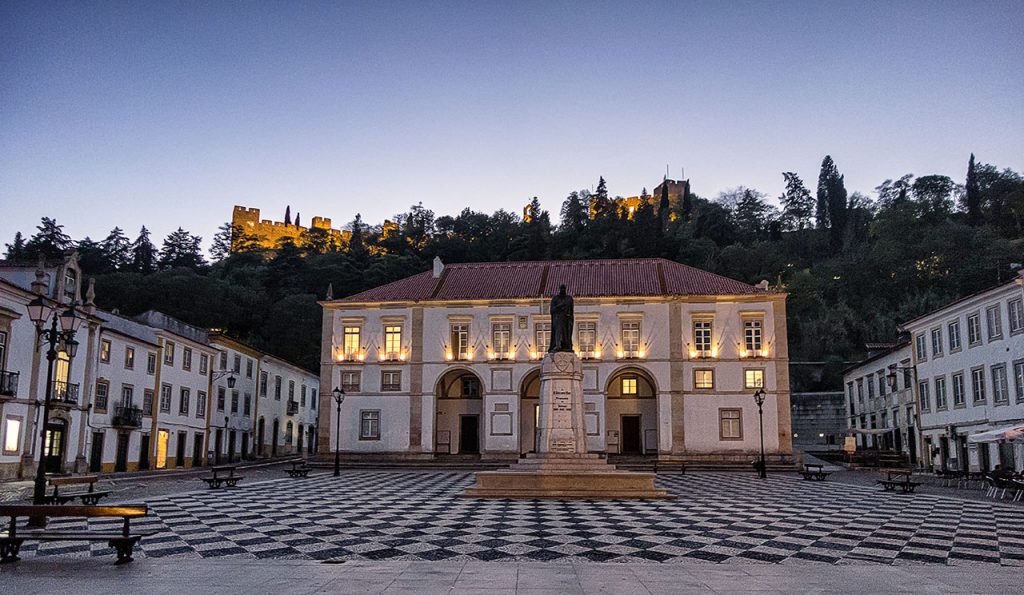
Situated in the geographic center of Portugal, Tomar (about 135 km northeast of Lisbon) was founded by the notorious Knights Templar in 1160. The Templars were part monks, part warriors and plotted crusades from Tomar for centuries. They established the beginnings of the Convento de Cristo, Tomar’s most famous landmark, on a hill overlooking town. The Convento combines architectural styles from the 12th through 17th centuries. An ornate octagonal canopy protects the high altar of the Templo dos Templares, modeled after the Holy Sepulchre in Jerusalem, and the grounds of the convent contain eight cloisters embracing a variety of styles.
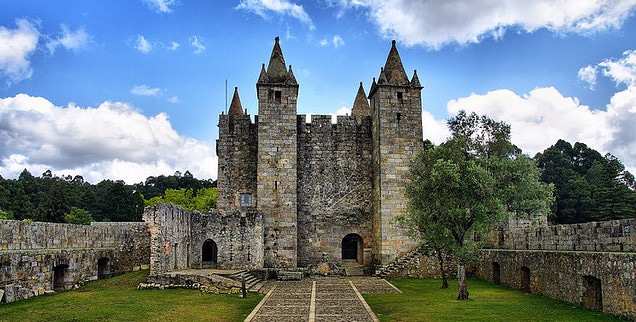
The Templars earned a reputation as ferocious fighters, and won the admiration and trust of both rich and poor. They served as protectors and transporters of Christian kings, power brokers and pilgrims and grew famous as bankers. The Templars acquired great wealth, but made many enemies in the process. Pope Clement V accepted accusations of heresy, blasphemy and sacrilege leveled against the Templars by Philip the Fair, king of France, and many Templars were imprisoned or executed. King Dinis of Portugal allowed them to regroup their forces under the new aegis of the Order of Christ. Prince Henry the Navigator became Administrator after the Templars became the Order of Christ and he used much their wealth to finance his explorations.
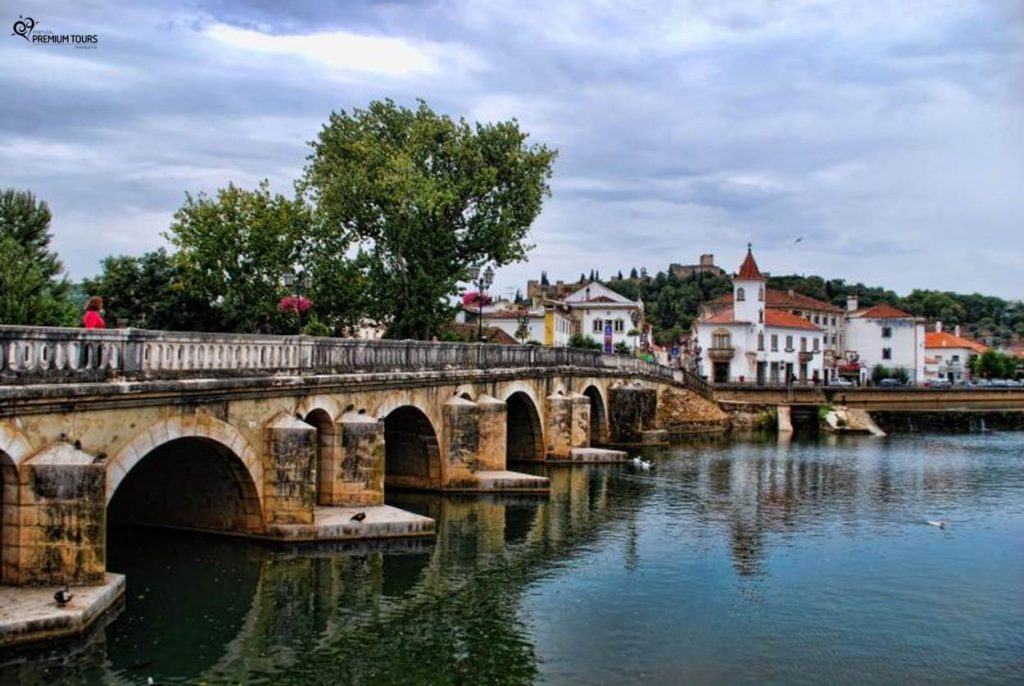
Tomar is divided by the River Nabão, the banks of which are dotted with weirs and wheels once used to water vegetable gardens and orchards. The irrigation techniques illustrate the Muslim tradition of hydraulic engineering. Most sights, accommodations and shops lie on the west bank of the river and the lush Parque Mouchão straddles the two banks. The ancient yet functional Ponte Velha (Old Bridge) connects the two. Tomar’s main shopping thoroughfare is rua Serpa Pinto, known locally as Corre Doura. Outlets for folklore, pottery, copperware and wrought iron highlight it. Tascas and bars are scattered throughout the city, with some offering live music.
Hotel dos Templários
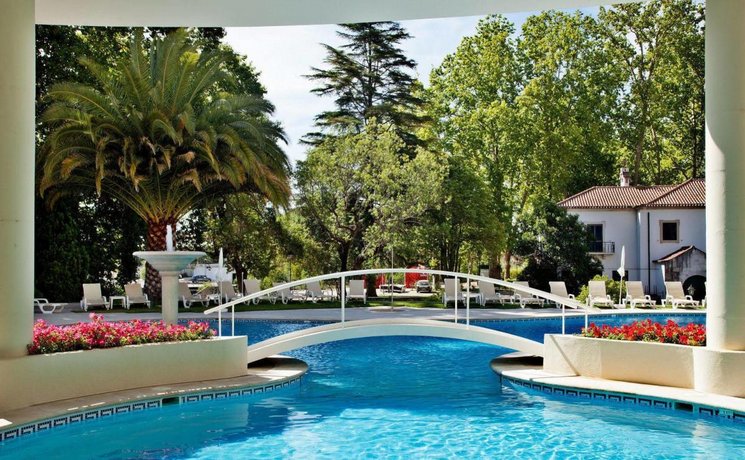
Situated near the heart of Tomar’s Old Town, the Hotel dos Templários is the largest hotel in the district. Many rooms offer views of the Convent of Christ and the public areas, including lounges and terrace-view dining rooms, are spacious. The hotel offers room service, laundry, a barbershop, a beauty parlor, a billiards room and baby-sitting. There are wide sun terraces, indoor and outdoor pools, a tennis court and a greenhouse. The hotel also has large gardens. Rooms have air conditioning, private bathrooms, televisions and minibars. Free parking is available.
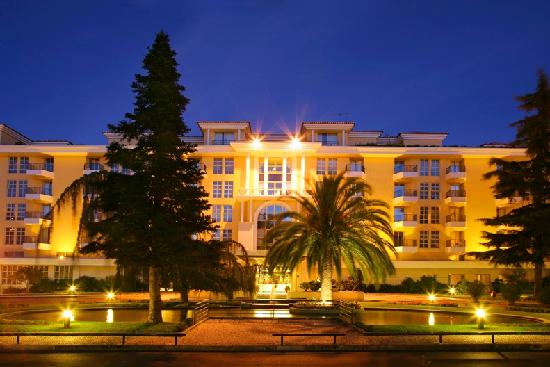
For more information on the area, please visit these web sites:
http://www.golisbon.com/portugal/cities/tomar.html
www.ezportugal.com/tomar-portugal
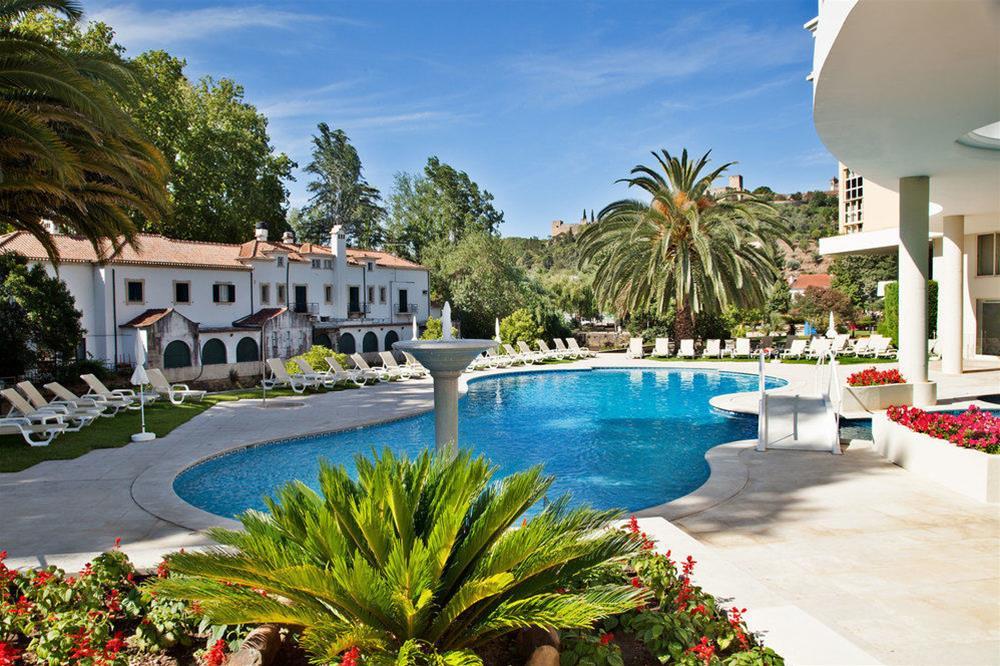
Transportation from Lisbon to Tomar
Lisbon train station to Tomar:
It is a pleasure to travel by train from Lisbon to Tomar. The pace is sweet and the scenery is different. The distance is 85 miles and the average travel time is 2 hours. There are 16 trains every day in each direction. The fare is about $11. You will arrive in Tomar relaxed, fresh, and ready to meet everyone at the Conference.
By automobile from Lisbon:
The rental car companies will provide maps and driving instructions. Allow between 1-1/2 – 2 hours for the trip, depending on traffic. The hotel provides free parking.
More detailed information will be available when registration opens.
General Information About ECI
Engineering Conferences International (ECI) is a not-for-profit, global engineering conferences program, originally established in 1962 that provides opportunities for the exploration of problems and issues of concern to engineers and scientists from many disciplines.
The format of the conference provides morning and late afternoon or evening sessions in which major presentations are made. Poster sessions will be scheduled for evening discussion as well. Available time is included during the afternoons for ad hoc meetings, informal discussions, and/or recreation. This format is designed to enhance rapport among participants and promote dialogue on the development of the meeting. We believe the conferences have been instrumental in generating ideas and disseminating information to a greater extent than is possible through more conventional forums.
All participants are expected both to attend the entire conference and to contribute actively to the discussions. The recording/photographing of lectures and presentations is forbidden. As ECI conferences take place in an informal atmosphere, casual clothing is the usual attire.
Smoking is prohibited at ECI conferences and conference functions.


